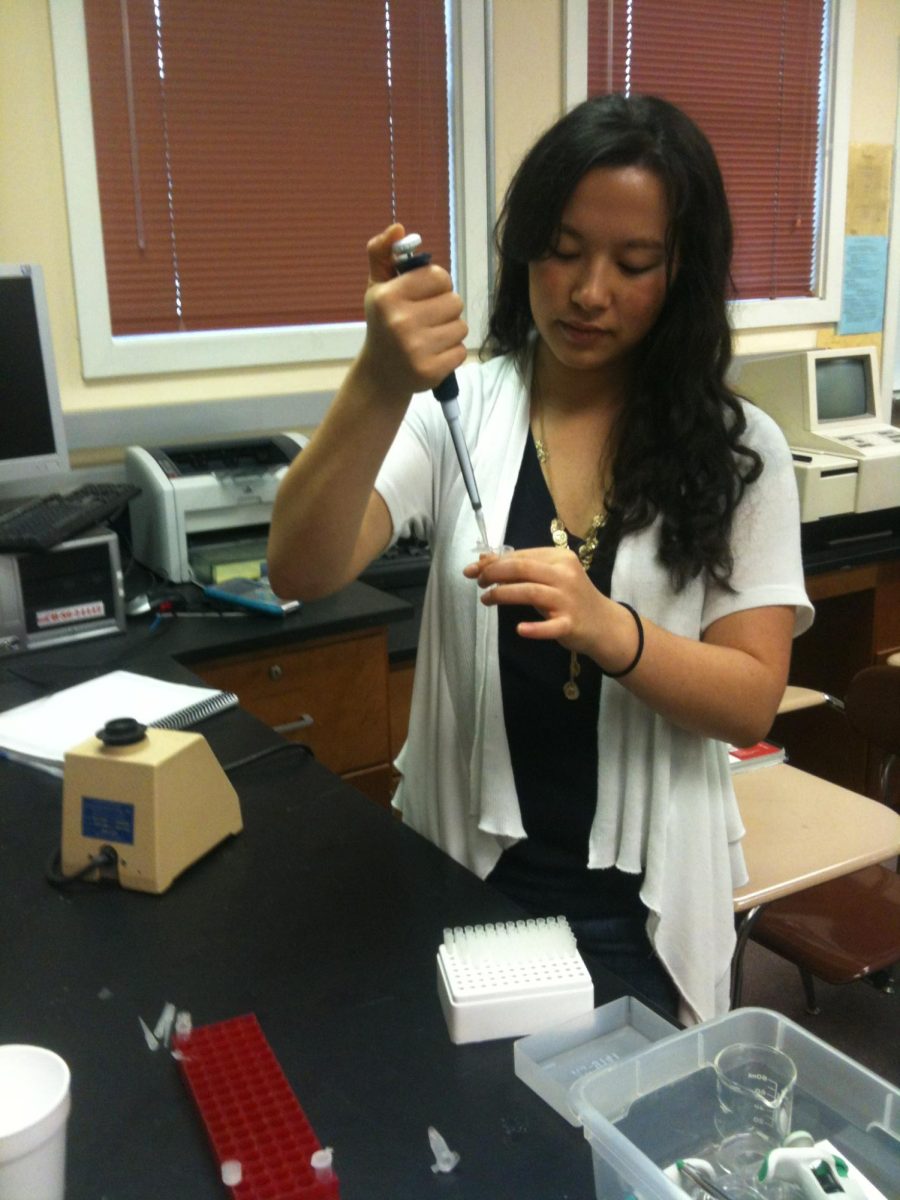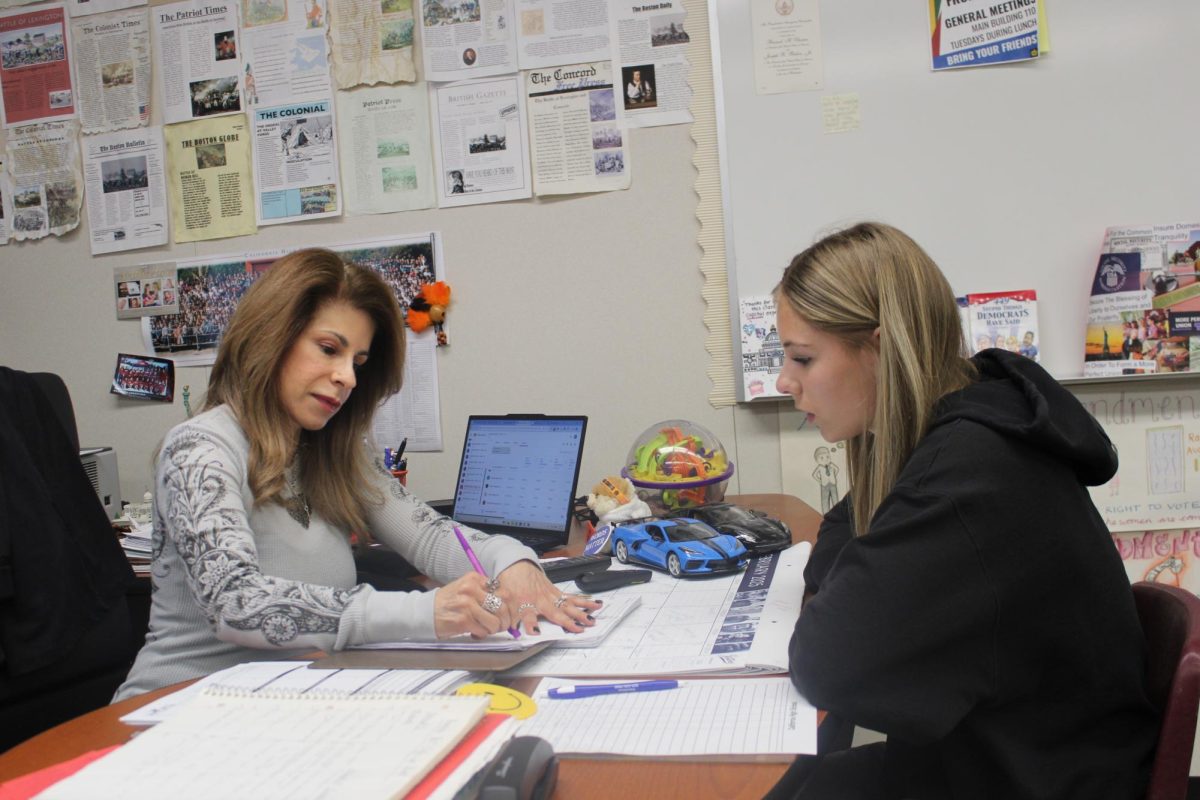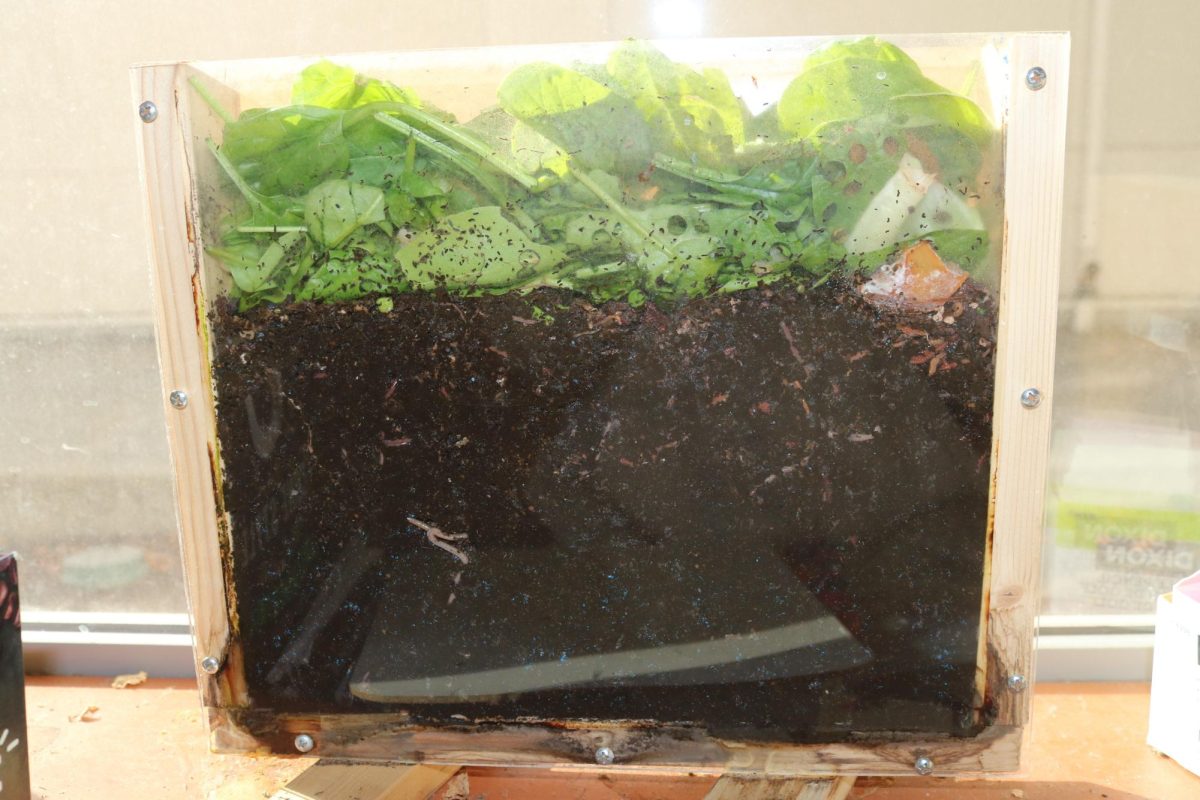Patrice Mardo
Editor-in-Chief
Cal High welcomed a new four-legged friend to campus last month.
Senior Abby Harper has been given the opportunity to “puppy raise” Kessler, a seven-month old pure bred, black Labrador that will be trained to become a guide dog for the blind.
Through the San Ramon Valley Guide Dogs (SRVGD), Harper fulfilled an intensive four-month training program that included weekly club gatherings, consecutive training meetings, and theoretical vocal testing in order to become certified to raise Kessler.
Harper now raises Kessler under a 24-hour watch, teaching him basic training and socialization skills, while preparing him for his future training.
Harper’s training period is relatively short compared to others who have learned to raise a puppy. The program can take up to six months to fulfill the training, said Louise Pay, the club leader for SRVGD.
The short training period is especially surprising since Harper has never actually owned a dog herself. At most, she has kept fish as pets.
“I’ve always wanted a dog but I couldn’t have one,” said Harper. “My brother and mom were allergic.”
Her mom and brother, Graham, are in Los Angeles for his acting career, allowing Harper to train Kessler at home.
Though Harper is relatively inexperienced when it comes to raising dogs, Pay believes she does not show it.
“She has something about her,” said Pay. “Even though she’s petite, she’s a very strong young woman.”
But raising Kessler hasn’t been easy. For one, the adorable pup definitely attracts attention wherever he goes with his big brown eyes, especially in the halls around campus.
“I was really excited because I love dogs,” said senior Krysten Basquez, who is in Harper’s yearbook class.
Harper also admits that she was worried about Kessler and the initial commotion from the students during his first week.
“I was a little nervous,” said Harper during the first week of her training period. “I wasn’t sure how people would react.”
But after a few weeks, students respected that Kessler was a guide dog in training. Teachers also have enjoyed the company of Harper’s new furry friend.
Doug DeVries, Harper’s economics teacher and an avidanimal lover, has found Kessler to be of no trouble at all. In fact, DeVries pokes a bit of fun at the idea of having a dog in class and even incorporates the idea in his teaching.
“I taught them Dogenomics the other day,” said DeVries. “We did a supply and demand for dog bones.”
Senior Cody Heally, who is also in Harper’s economics class, agrees that Kessler hasn’t been a distraction.
“The dog sits under the desk and just falls asleep,” said Heally. “It’s kind of funny when he snores.”
As Harper trains Kessler, she has noticed that he becomes easily distracted and needs constant motivation. For dog owners who have raised Labradors, it’s understood that this breed has a tendency to be very playful.
“Not all dogs are perfect angels,” said Harper admittedly. “But with a little kibble, he listens.”
Although it is tiring for Harper to balance schoolwork and training Kessler, she has enjoyed the eight-month training period she has with Kessler so far.
After the training period, professional trainers from SRVGD will evaluate Kessler. If Kessler passes his preliminary evaluation, he will continue with 10 more training programs before he is certified as a guide dog for the blind.
According to Pay, about 76 percent of the dogs trained in preparation to become guide dogs for the blind become certified. If for some reason Kessler is not certified to be a guide dog for the blind, he has the opportunity to enter the “Buddies” program, where he can train to become a guide dog for other services.
Beyond domestic pets, Harper would like to train much bigger animals. With the support of her family, Harper hopes to major in animal science to pursue her interests in animal training and care in college.
“It’s great,” said Mike Harper, Abby’s father. “She appears to have a natural talent.”





